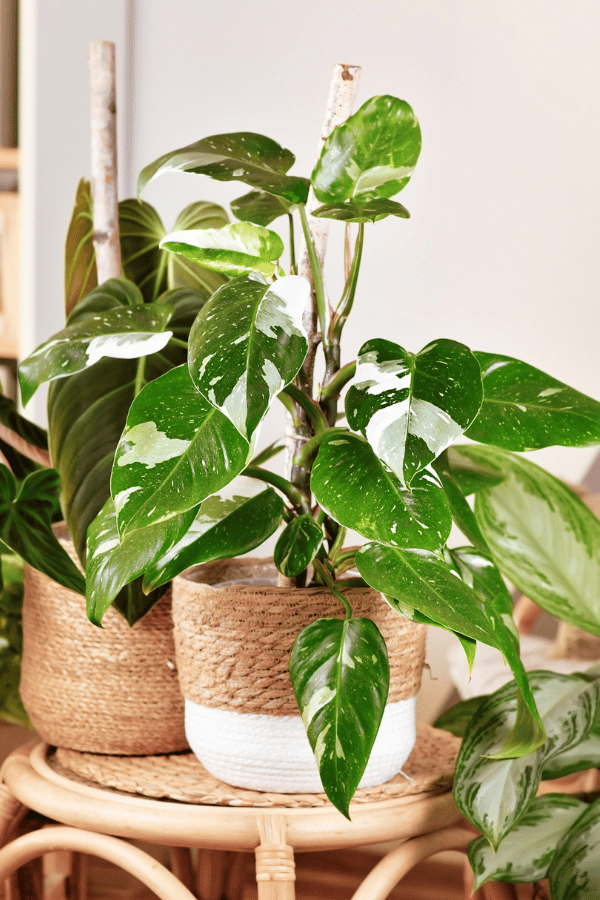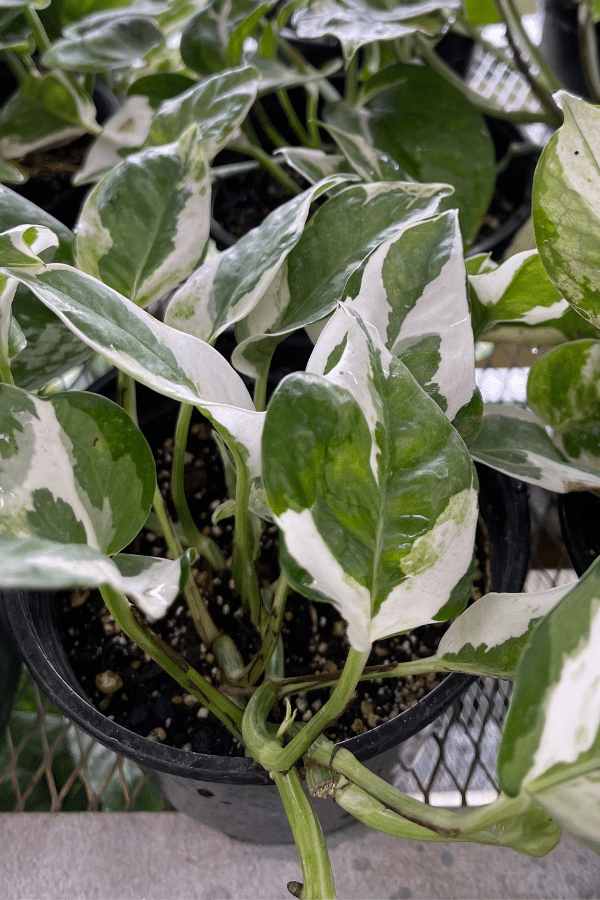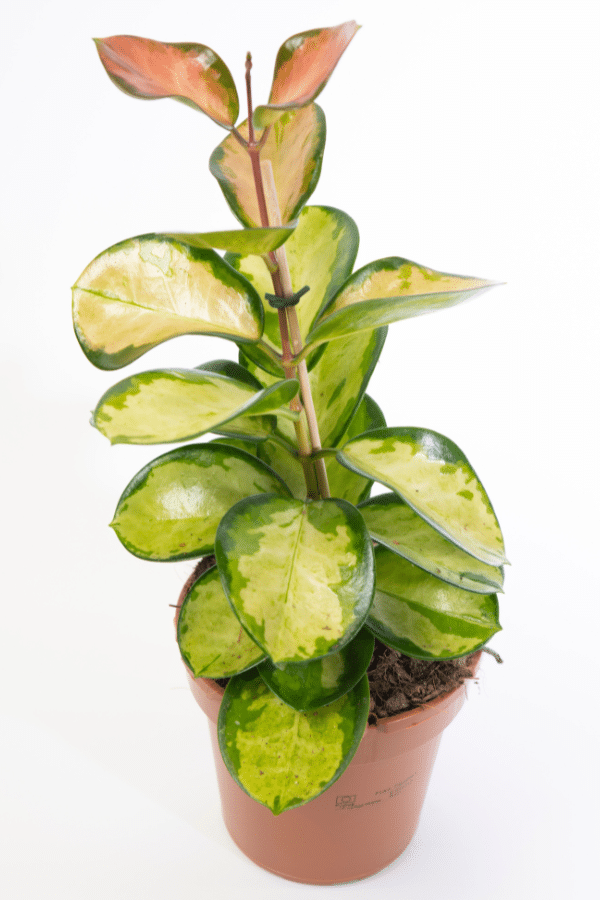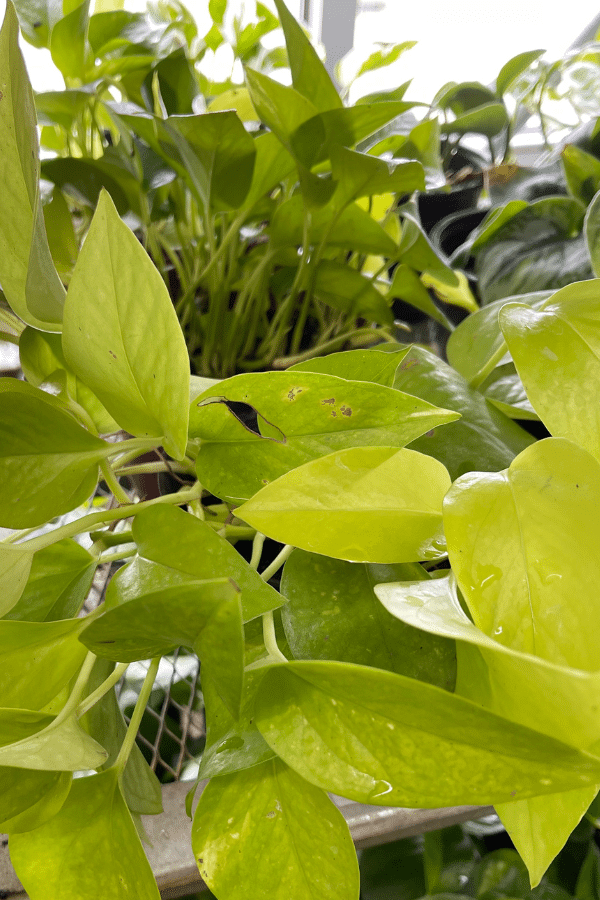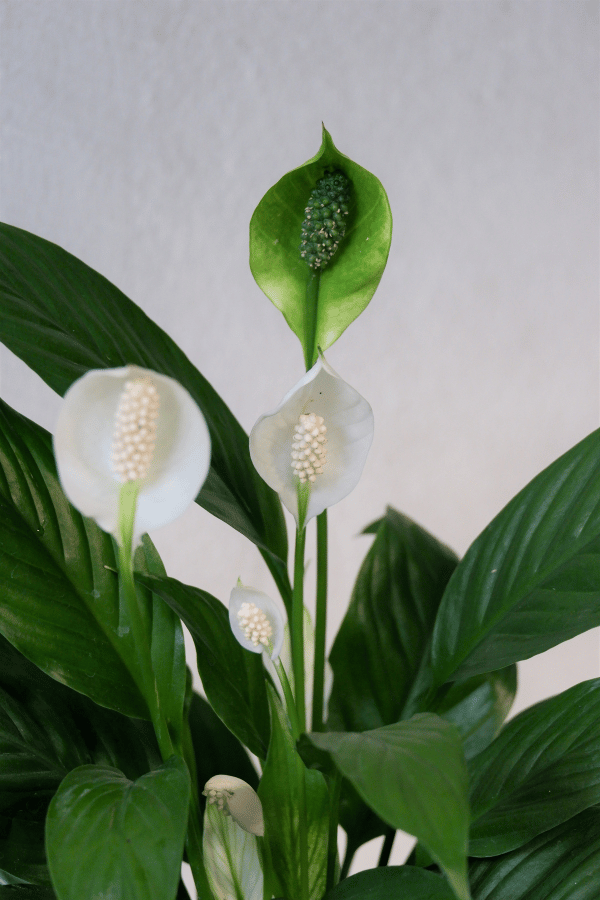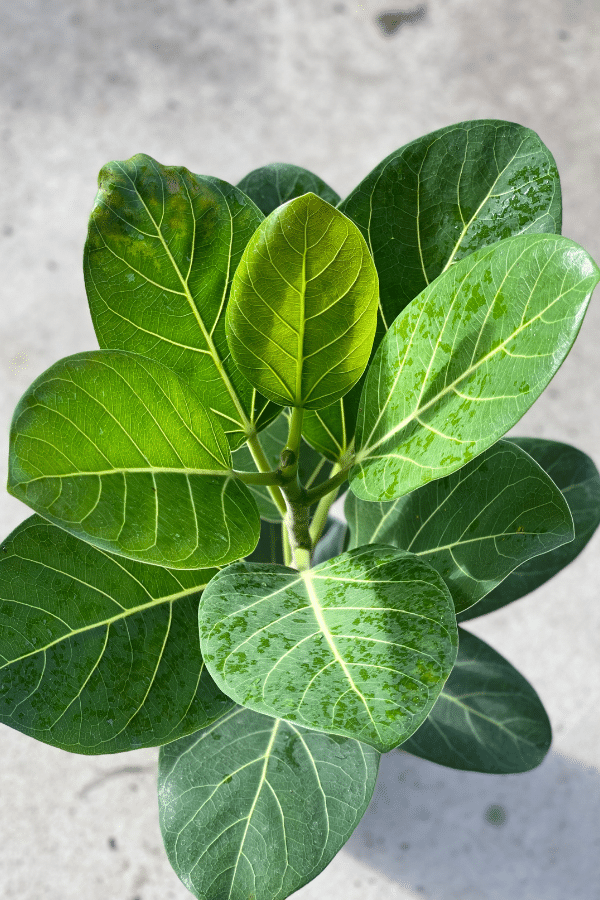Philodendron Goeldii
Scientific Name: Philodendron Goeldii
Common Name: Philodendron Goeldii, Fun Bun
Philodendron Goeldii care is an easy Philodendron to grow and care for. If you need a compact houseplant that’s unique, a Philodendron Goeldii plant may be for you.
To give this Philodendron plant the best care, it requires well-draining soil that is rich in nutrients, allow the soil to dry out before watering, provide it with bright indirect sunlight, temperatures ranging from 50-85F, and high humidity levels.
Quick Care Overview
| Common Name | Fun Bun, Finger Leaf |
| Scientific Name | Philodendron Goeldii, Thaumatophyllum Spruceanum |
| Family | Araceae |
| Origin | French Guiana |
| Growth Rate | Medium |
| Identification | Green foliage with leaves that form in a ring |
| Height | Up to 3 feet tall |
| Soil | Well-draining soil |
| Water | Allow soil to dry out before watering |
| Temperature | 50-85F |
| Sunlight | Bright indirect sunlight |
| Toxic to Cats & Dogs | Yes |
| Toxic to Humans | Yes |
| Pests | Scale, spider mites, scale, and mealybugs |
| Diseases | Root rot |
Below we will dive deep into this Philodendron Goeldii care guide.
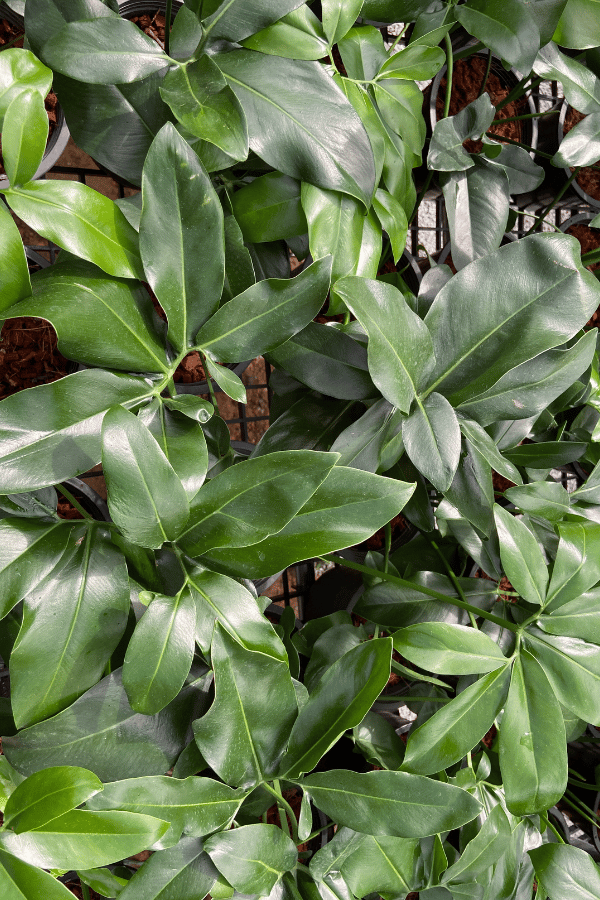
Philodendron Goeldii History
French Guiana native, Philodendron Goeldii, otherwise known as the finger leaf, fun bun plant, or Thaumatophyllum Spruceanum, is a beautiful tropical plant with long, clustered leaves that appear in ring shapes, almost appearing like a crown.
Philodendron Goeldii Identification
The unique leaves of this Philodendron tend to twist and curve giving in a very unique appearance. Star-shaped clusters of green leaves rest onto long upward stems.
Philodendron Goeldii Growth Facts
This gorgeous plant remains compact, making it an ideal choice for many places that cannot accommodate larger tropical plants.
How Big Does a Philodendron Goeldii Get?
Philodendron Goeldii may grow up to 2-3 feet tall.
Philodendron Goeldii Care
This easy-to-care for plant is perfect for beginners and will bring a tropical touch to the home.
Philodendron Goeldii Soil
The best Philodendron Goeldii soil is a well-draining, rich soil mix such as a commercial potting mix with incorporations of compost, bark, and peat moss or coco coir.
Philodendron Goeldii Fertilizer
Philodendron Goeldii will benefit from a monthly feeding from a balanced liquid fertilizer indicated for houseplants during the warm growing season of spring and summer. Do not fertilize your plant in the fall and winter during the plant’s dormancy. Ensure that you do not overfertilize, as this may cause excessive salt buildup in the soil causing the plant to experience chemical burn.
Philodendron Goeldii Watering
Philodendron Goeldii likes to remain consistently moist but not oversaturated. You will likely need to water your Philodendron twice a week, depending on growing conditions. Watering frequency should be reduced in the fall and winter. Allow your plant to dry out completely in winter before rewatering. Do not let your plant sit within standing water within the plant’s tray.
Philodendron Goeldii Light Requirements
Philodendron Goeldii likes to be kept in bright indirect light. You should not expose this plant to direct sunlight, as it may quickly lead to severe leaf scorching. Compared to other indoor tropical houseplants, Philodendron Goeldii can tolerate lower light conditions. However, too little light may cause the plant to become stunted and leggy.
Philodendron Goeldii Temperature & Humidity
Being a tropical plant, Philodendron Goeldii likes to be kept in warm, humid environments, between 50 to 85 degrees Fahrenheit. To be happy, Philodendron Goeldii also requires a high humidity level. Being grown in higher humidity levels will lead to larger leaf growth. You may increase the humidity in your home by adding a humidifier or pebble trays. As this plant requires high humidity, it is suggested to provide it with air circulation to prevent fungal diseases and root rot.
Repotting Philodendron Goeldii
As Philodendron Goeldii is sensitive to repotting and likes to remain somewhat rootbound, you should only repot it every 2-3 years or whenever the plant has visibly outgrown the pot. Select a container 1-2 inches larger than the previous container, repot your plant, refresh the soil, tamp lightly, water thoroughly, and place in indirect light.
Philodendron Goeldii Maintenance & Pruning
As Philodendron Goeldii remains compact, it will not need frequent pruning. However, you may prune periodically using clean, sharp shears to remove any dead, discolored, or diseased foliage or to maintain its shape.
Philodendron Goeldii Propagation
Philodendron Fun Bun may be easily propagated through stem cuttings or air layering. To take a stem cutting, cut a piece of stem that has at least one node and is 2-3 inches long. Ensure that the cutting(s) have a couple of leaves. Keep the top 2-3 leaves and remove the rest. Place your cutting(s) in soil and water thoroughly, and place in indirect light. Within a few weeks, the cutting(s) should root and may be transplanted into another container. Alternatively, you may propagate via air layering.

Philodendron Goeldii Toxicity
Toxicity to Humans
Like many other Philodendrons, Philodendron Goeldii is considered toxic and should not be ingested. It is suggested to keep this plant up and away from babies and small children to avoid any potential accidents.
Toxicity to Cats & Dogs
Philodendron Goeldii is considered toxic to pets and should not be consumed. If you suspect your pet has consumed any portion of this plant, contact your veterinarian or animal poison control immediately.
Philodendron Goeldii Problems
Philodendron Goeldii Leaves Turning Yellow
When leaves of Philodendron Goeldii turn yellow, it is often due to insufficient lighting or a watering issue.
Philodendron Goeldii Leaves Turning Brown
The foliage of Philodendron Goeldii may turn brown either due to lack of moisture and humidity or due to too intense of direct sunlight.
Philodendron Goeldii Diseases
Although Philodendron Goeldii is considered relatively hardy and largely disease-resistant, it still may suffer from common problems, often due to overwatering. Root rot is a major concern for this plant. Ensure that you do not overwater your Philodendron and that you do not leave it sitting in excess water within the plant’s drainage tray.
Philodendron Goeldii Pests
Although Philodendron Goeldii is considered largely pest-resistant, it still may be affected by common indoor houseplant pests such as aphids, thrips, mealybugs, spider mites, scale insects, and more. These are small insects and identifying them can be a challenge. Be sure to look at your plant thoroughly including the soil, stems, tops of leaves and the underside. Using a cotton ball soaked with 70% rubbing alcohol will help to eliminate the population of these bugs. Be sure to isolate your plant, and treat it with insecticidal soap or use neem oil.

